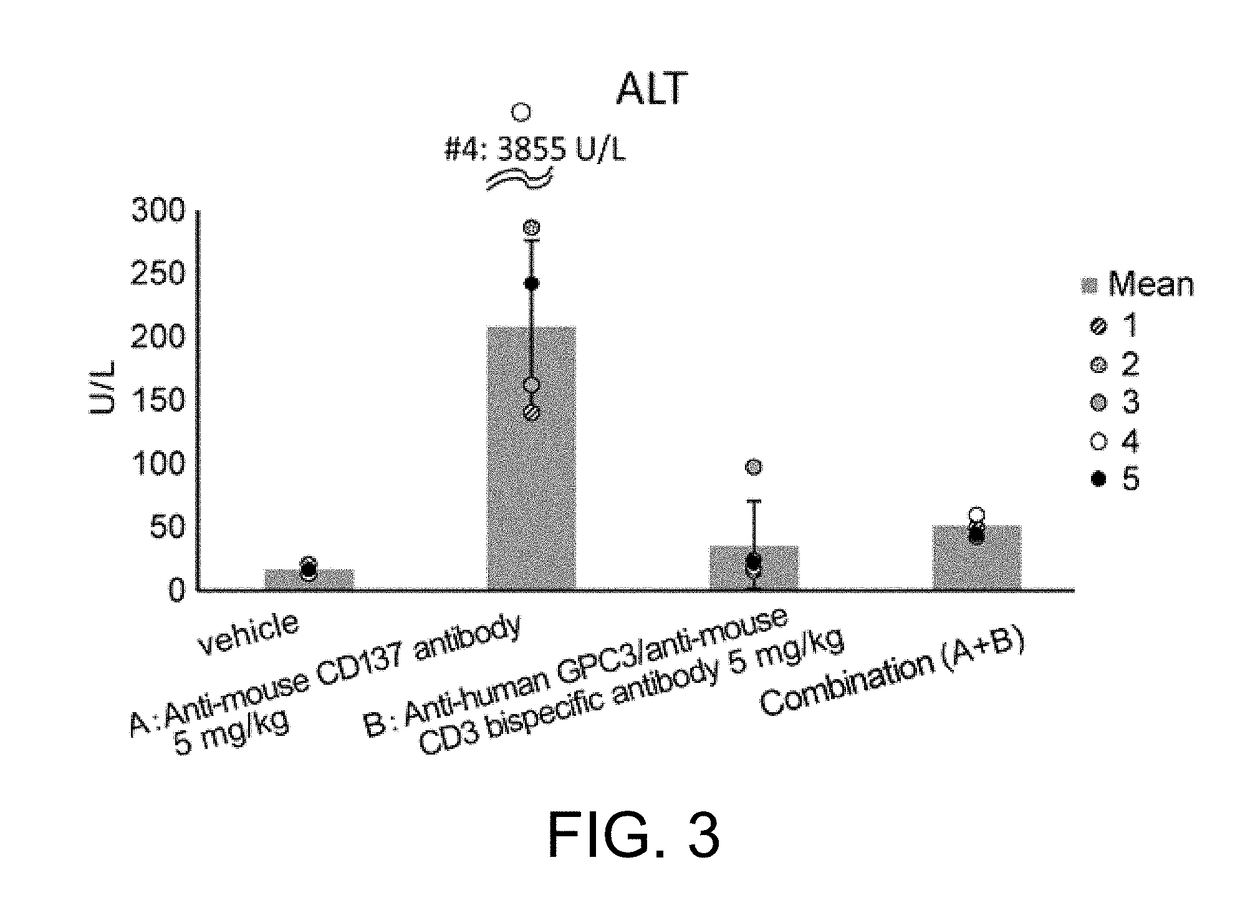Combined use of immune activators
- Summary
- Abstract
- Description
- Claims
- Application Information
AI Technical Summary
Benefits of technology
Problems solved by technology
Method used
Image
Examples
reference example 1
ibody Expression Vectors, and Expression and Purification of Antibodies
[0294]Synthesis of full-length genes encoding the nucleotide sequences of the H chain and L chain of the antibody variable regions was carried out by production methods known to those skilled in the art using Assemble PCR and such. Introduction of amino acid substitutions was carried out by methods known to those skilled in the art using PCR or such. The obtained plasmid fragment was inserted into an animal cell expression vector, and the H-chain expression vector and L-chain expression vector were produced. The nucleotide sequence of the obtained expression vectors was determined by methods known to those skilled in the art. The produced plasmids were transiently introduced into the HEK293H cell line derived from human embryonic kidney cancer cells (Invitrogen) or into FreeStyle293 cells (Invitrogen) for antibody expression. The obtained culture supernatant was collected, and then passed through a 0.22 μm MILLEX...
reference example 2
s and Cell Lines
[0295]The experimental animals used were female C57BL / 6 mice (Charles River Laboratories Japan, Inc.) or female Balb / c mice (Charles River Laboratories Japan, Inc.). They were bred in a breeding room under constant conditions (temperature: 20° C. to 26° C.; lighting: 12-hour light-dark cycle) with ad libitum access to feed and water. The human GPC3 gene was integrated into the chromosome of the mouse lung cancer cell line LLC (ATCC No. CRL-1642) by a method well known to those skilled in the art to obtain an LLC-GPC3 cell line that expresses human GPC3 in high levels. The expression level of human GPC3 (2.3×105 / cell) was determined using the QIFI kit (Dako) by the manufacturer's recommended method. Similarly, the human GPC3 gene was integrated into the mouse colorectal cancer cell line CT-26 (ATCC No. CRL-2638) to obtain the high expression CT26-GPC3 cell line (expression level: 3.1×105 / cell). To maintain the human GPC3 gene, these recombinant cell lines were culture...
example 1
on of an Anti-Mouse CD137 Antibody
[0296]1D8VH-MB492 (SEQ ID NO: 29) was prepared according to the method of Reference Example 1 by using as the antibody H chain variable region, 1D8VH (SEQ ID NO: 28) which is a variable region against mouse CD137 disclosed in WO2005 / 017148, and using as the antibody H-chain constant region, a naturally-occurring mouse IgG1 H chain constant region into which modifications (T230E, V231P, P232N, S238E, S239D, and N324D) that enhance mFcgRII binding have been introduced. 1D8VL disclosed in WO2005 / 017148 was used as the antibody L chain variable region, and 1D8VL-mk0 (SEQ ID NO: 30) which has the constant region of the mouse κ chain was used as the L chain constant region. They were expressed and purified according to the method of Reference Example 1 to obtain 1D8VH-MB492 / 1D8VL-mk0. Herein below, this antibody will be described as the anti-mouse CD137 antibody for simplicity.
PUM
| Property | Measurement | Unit |
|---|---|---|
| Immunogenicity | aaaaa | aaaaa |
Abstract
Description
Claims
Application Information
 Login to View More
Login to View More - R&D Engineer
- R&D Manager
- IP Professional
- Industry Leading Data Capabilities
- Powerful AI technology
- Patent DNA Extraction
Browse by: Latest US Patents, China's latest patents, Technical Efficacy Thesaurus, Application Domain, Technology Topic, Popular Technical Reports.
© 2024 PatSnap. All rights reserved.Legal|Privacy policy|Modern Slavery Act Transparency Statement|Sitemap|About US| Contact US: help@patsnap.com










